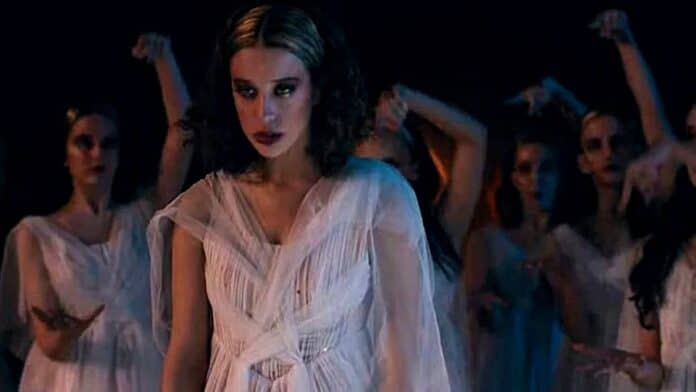Dancing on Glass explores the lives of two ballerinas, while they find comfort in each other’s presence as things get out of hand. The intimate psychological drama is now streaming on Netflix.
Story
The film takes off with the suicide of Maria, the prima ballerina, who was meant to play the role of Giselle in the upcoming production by Spain’s premier company, National Ballet Company.
The company then declares Irene as the new Giselle, while a new member, Aurora, becomes part of the company.
The feeling of being an outcast and lack of identity brings Irene and Aurora together to form an intimate friendship that later seals their fate.
While Irene finds her coping mechanism in her disordered dietary patterns and shutting out her family, Aurora finds solace in making up her world where everyone is made of glass to feel safe.
Dancing on Glass provides the perfect amalgamation of the factors expected from a ballet film: an unhealthy obsession with perfection, body image issues, envy and toxic behaviour.
In this strict and toxic environment, Irene and Aurora bond over the desperate need to be understood and to feel safe without the passion for their art going unnoticed.
While these two ballerinas try to grasp onto a hint of identity and sexuality, the death of Maria sets the dark tone of the whole film as her death haunts their lives until more tragedies take place.
Performances
María Pedraza and Silvia Kal (Irene and Aurora) steal the spotlight with their passionate and realistic dialogue delivery. Their need for each other and their fear of separation are observed merely by the way they look at each other throughout the film.
Mona Martínez, playing the role of Norma, gives an exquisite performance in portraying the obsession of the character with perfection and ballet.
Olivia Baglivi (Ruth) exhibits perfectly the traits of a nemesis with her sharp looks, while she later gains a soft spot for Irene and warns her about Norma. Her on-point performance makes it harder to trust Ruth’s intentions with Irene.
All the characters are well-crafted by the actors and showcase the fragility of the ballerinas successfully while the other characters fit into their roles perfectly to represent the dark undertone of the film.
Positives
Maria’s death haunts the rest of the film, giving it a sinister aura, as an incessant feeling of something going wrong follows the audience throughout.
The cinematography is worth mentioning as it helps set the tone of the film, perfectly capturing the haunted aura originating from the death of Maria.
While it is expected of a ballet film to match ‘Black Swan’ to its depth, Dancing on Glass did the opposite by forging the intimate bond between Irene and Aurora.
Just like any other ballet film, however, Dancing on Glass portrays the striking lows of ballet life with the presence of Norma, who is a strict perfectionist, and a dangerous mentor. Not only is the fear of Norma portrayed in her being, but in the peers of Irene, who get concerned for her and are willing to report Norma.
A creative edge must be observed in the way the film is written. The whole film, as in a play or a ballet performance, is divided into two Acts, just like ‘Giselle’. The play-within-a-play format is followed to connect the ballet-performance Giselle with the movie, drawing an elegant parallel between the two.
Like all literary works, certain poetic justice was achieved by the end of the movie: the person who caused Maria’s death met their end at the hands of the ballerina who was to play Maria’s role, and likewise, as murder barely goes unpunished in tragedy, Irene and Aurora met their fate too.
Negatives
A major drawback lies with the overused plot and stale themes revolving around the toxicity of ballet life, only revealing ballet in a bad light, again.
While the storytelling is old yet riveting, the other characters are not explored enough, leaving us with only the main characters to dissect.
Verdict
Even though the movie has recycled the same old storytelling around ballet, the direction, cinematography and screenplay have made up for it via an intriguing vision and managing to explore homosexuality within the same. All of its beauty, the mesmerising ballet performances and even the dark themes make the film worthwhile.
Rating: 4/5

